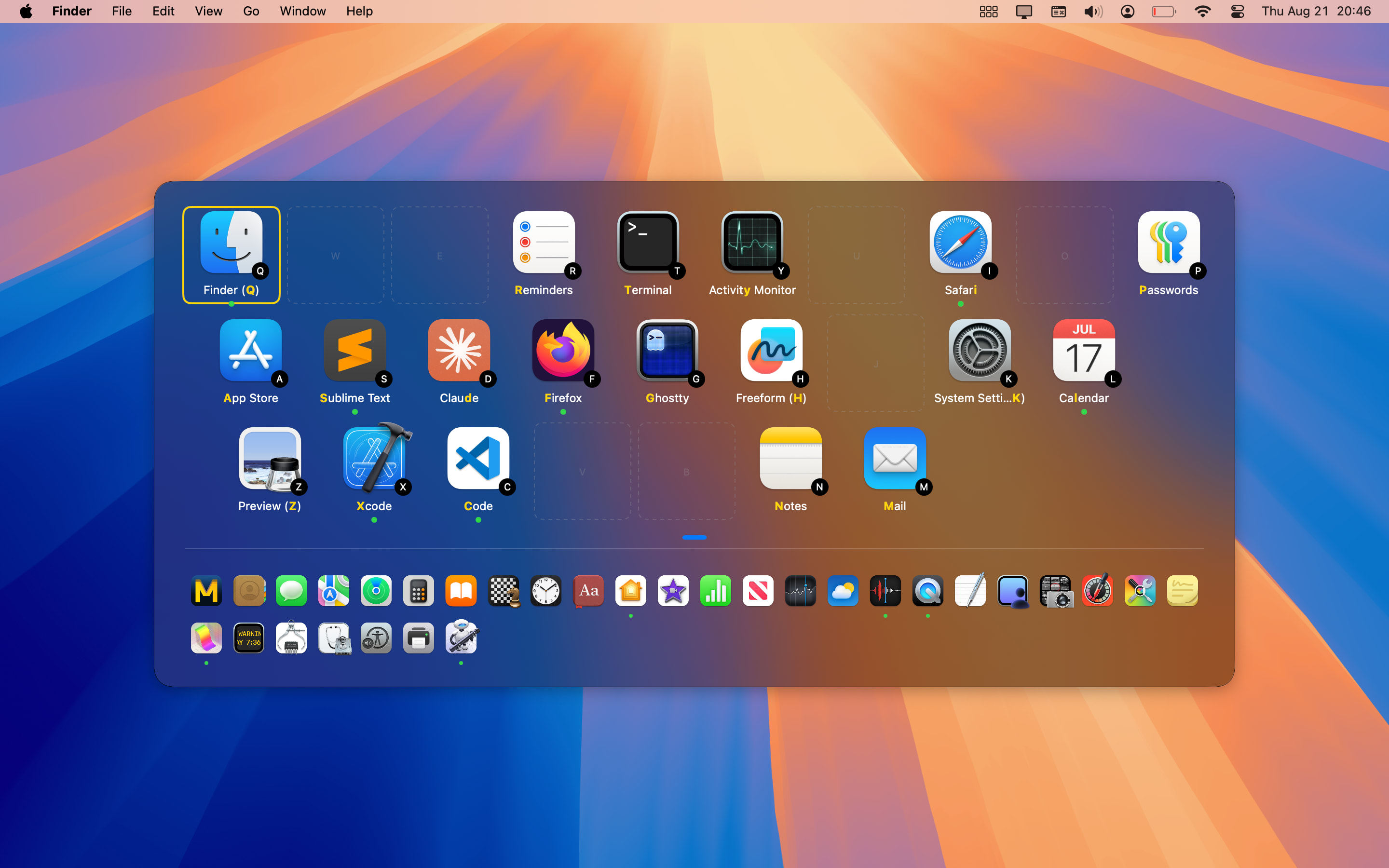Hold Right Command ⌘ to activate.
Press any letter to switch app instantly.
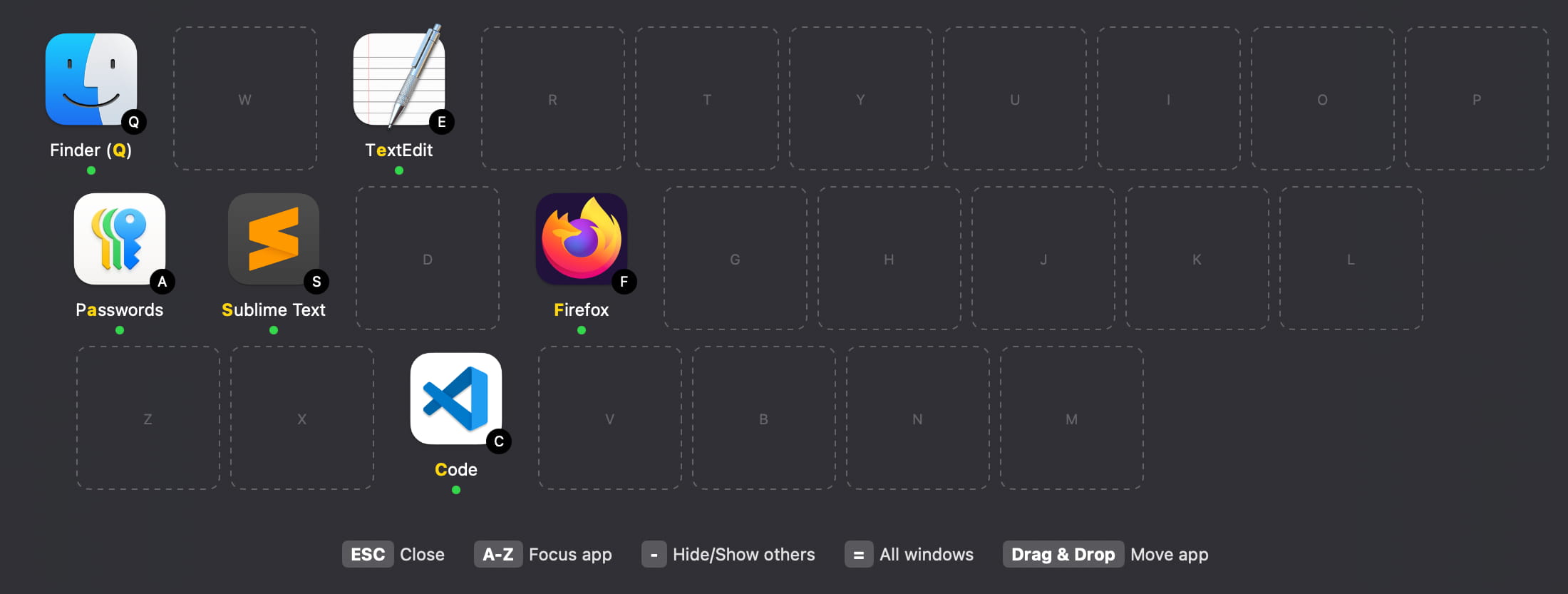
Press any letter to switch instantly.
Fixed spatial positioning ...
Each app maintains its exact position across all sessions, allowing spatial memory to develop.
After a few uses, you can locate apps without visual searching, reducing the cognitive load of finding the target app.
... mapped on your keyboard layout
The apps grid matches your keyboard layout, providing spatial positioning on your physical keyboard. This allows muscle memory to develop for direct keyboard access.
Benefits over Cmd+Tab
MacOS Cmd+Tab and Mission Control change app positioning each time they are invoked, turning app switching into visual scanning on screen. This interrupts your flow especially if you switch frequently between apps.
With SpatialDock, app switching feels more natural, as apps are always in the same spots on your screen and on your keyboard.
"I love how the app makes every switch feel instant because the fixed spots and direct keys let muscle memory take over without any thought."
"SpatialDock is much faster than any other task switcher I've tried, which is a huge plus since pressing the key combinations is quick."
— Reddit user, r/macapps
"Committed to your app after only half a day - and nine months after using an alt."
— Reddit user, r/macapps
"Works better for me than any of the similar apps I have tried."
— Reddit user, r/macapps
Fixed app position
Give each app a fixed position that never changes.
This consistent positioning allows your spatial memory to develop, making app locations predictable when switching apps.
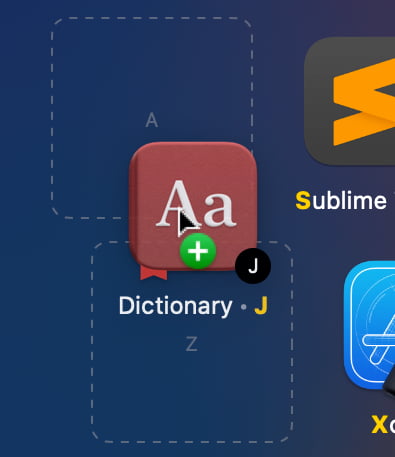
Direct keyboard shortcuts
Each app can be assigned to a specific key on your keyboard.
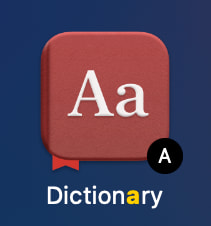
Primary and secondary docks
The primary dock holds apps assigned to keyboard shortcuts. These are typically your most frequently used applications.
The secondary dock contains all other running apps. This dock supports multiple rows and can be accessed by pressing the dock switch key (comma by default) or by scrolling.
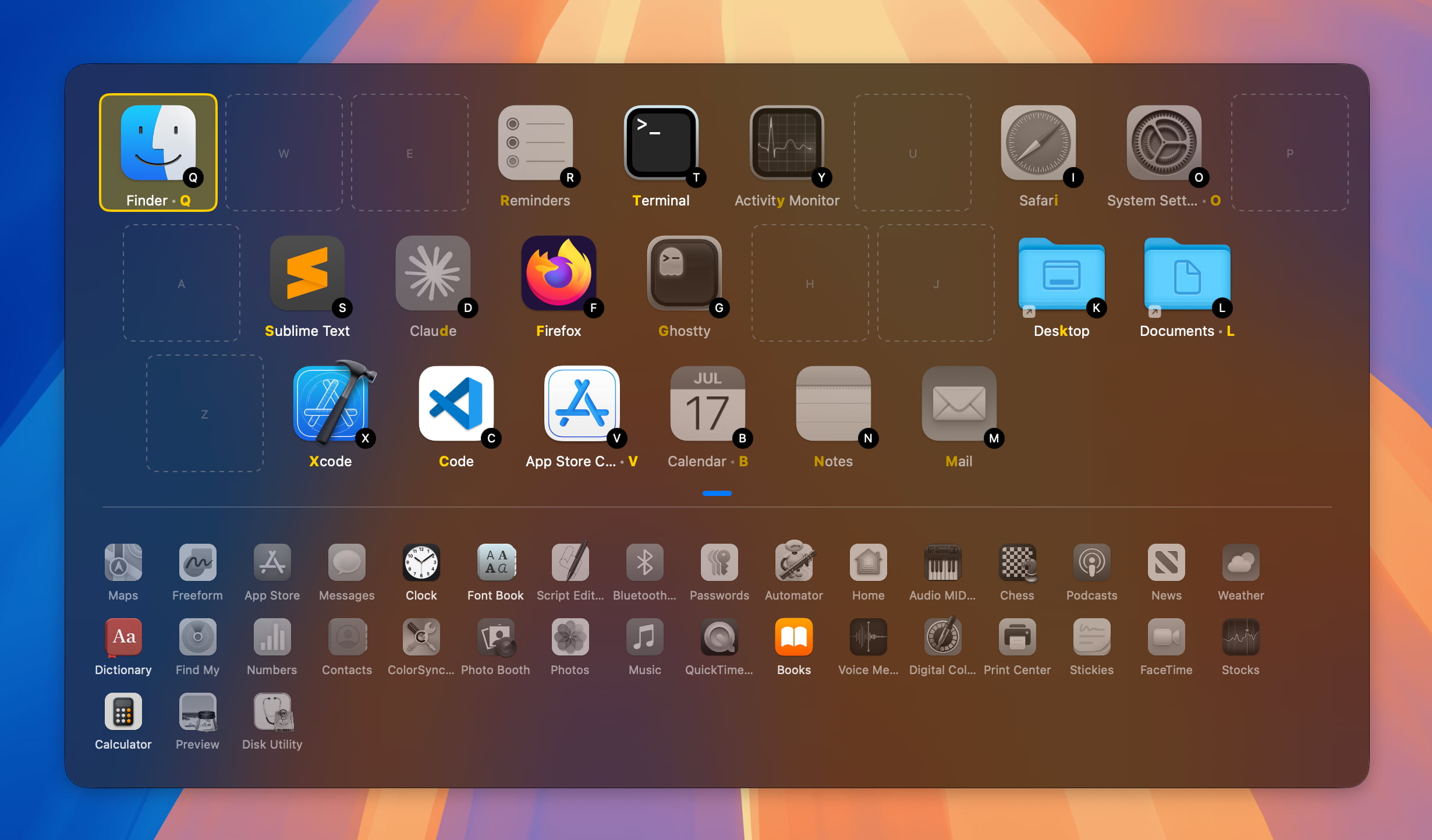
Activation methods
There are multiple ways to invoke SpatialDock
Modifier key: Hold a modifier key (Right Command, Option, etc.) to display SpatialDock, then press an app's letter or click its icon.
Modifier + Trigger key: Use combinations like Cmd+Delete with configurable repeat behaviors (toggle docks, cycle through apps spatially, or cycle by recent usage).
Alt+Tab mode: Functions like macOS Cmd+Tab, cycling through recently used apps, while allowing direct letter key selection.
App switching behavior
Bring windows forward: Configure whether switching to an app brings all its windows forward or just the most recent one. This can be set globally or per-app.
Hide others: Option to hide all other apps when switching, helping maintain focus. This can be set globally or per-app.
Toggle focus: Switching to an already-focused app hides it instead.
Links and URLs
You can also add shortcuts to:
• Files and folders
• Websites
• Custom URL schemes (deeplinks to specific app functions)
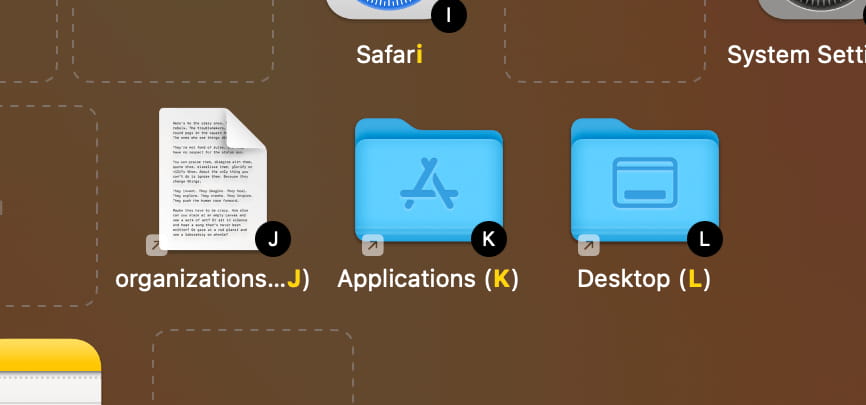
Organize with categories
Group your apps by category in the secondary dock, making it easier to find and navigate through your apps.
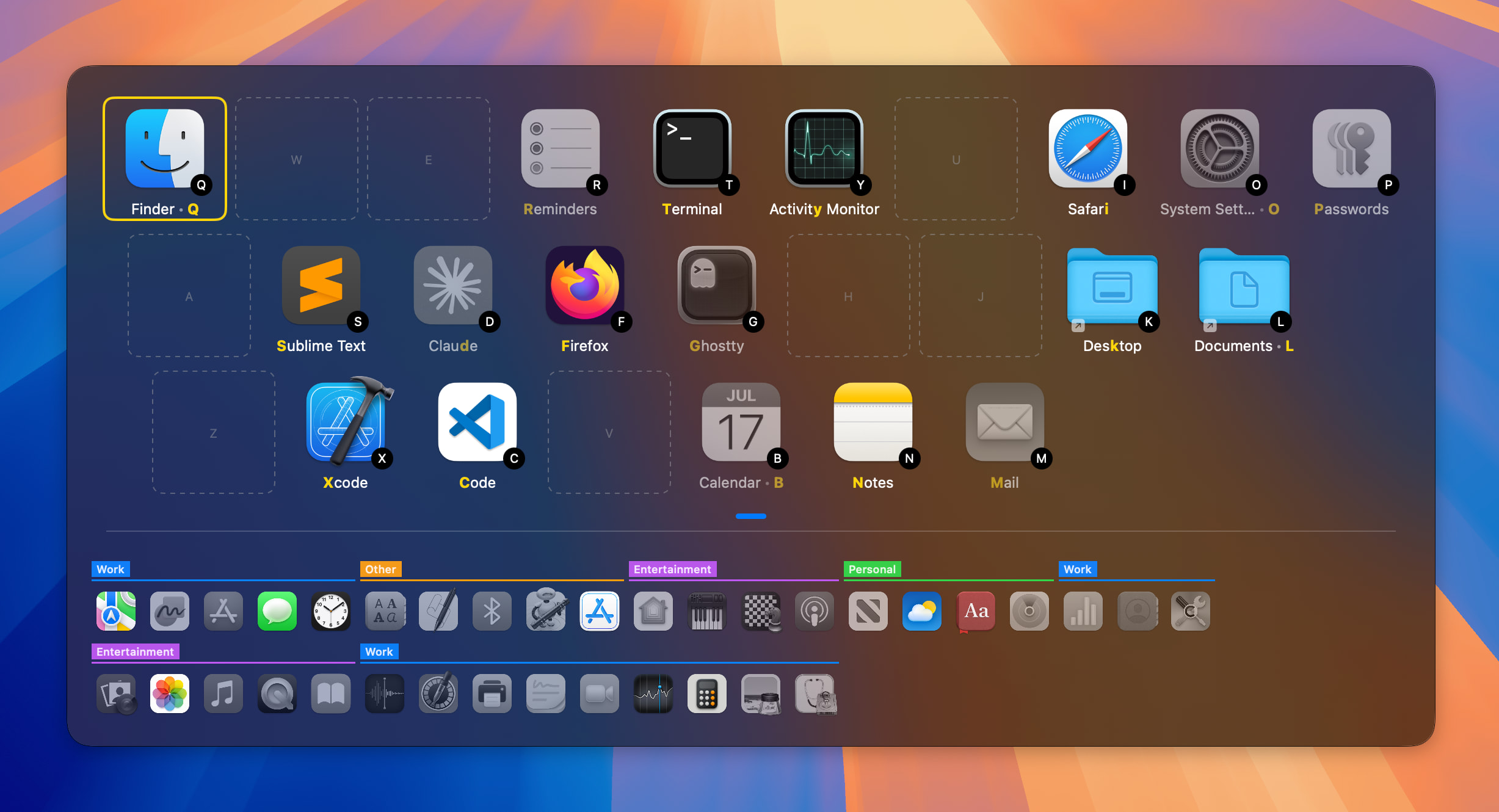
Customize app icons
You can customize each app icon.
Handle multiple macOS input sources
Keyboard shortcuts work seamlessly across all keyboard layouts you use (QWERTY, Korean, Cyrillic, ...).
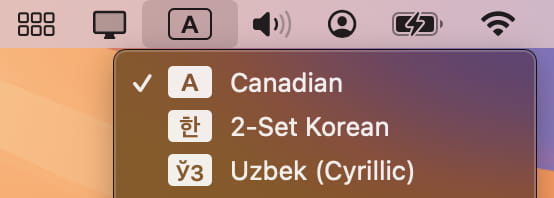
Custom keyboard layouts
Create layouts matching your physical keyboards: Colemak, Dvorak, Cyrillic, split keyboards, ...
This maintains spatial consistency between your physical keyboard and the on-screen representation.
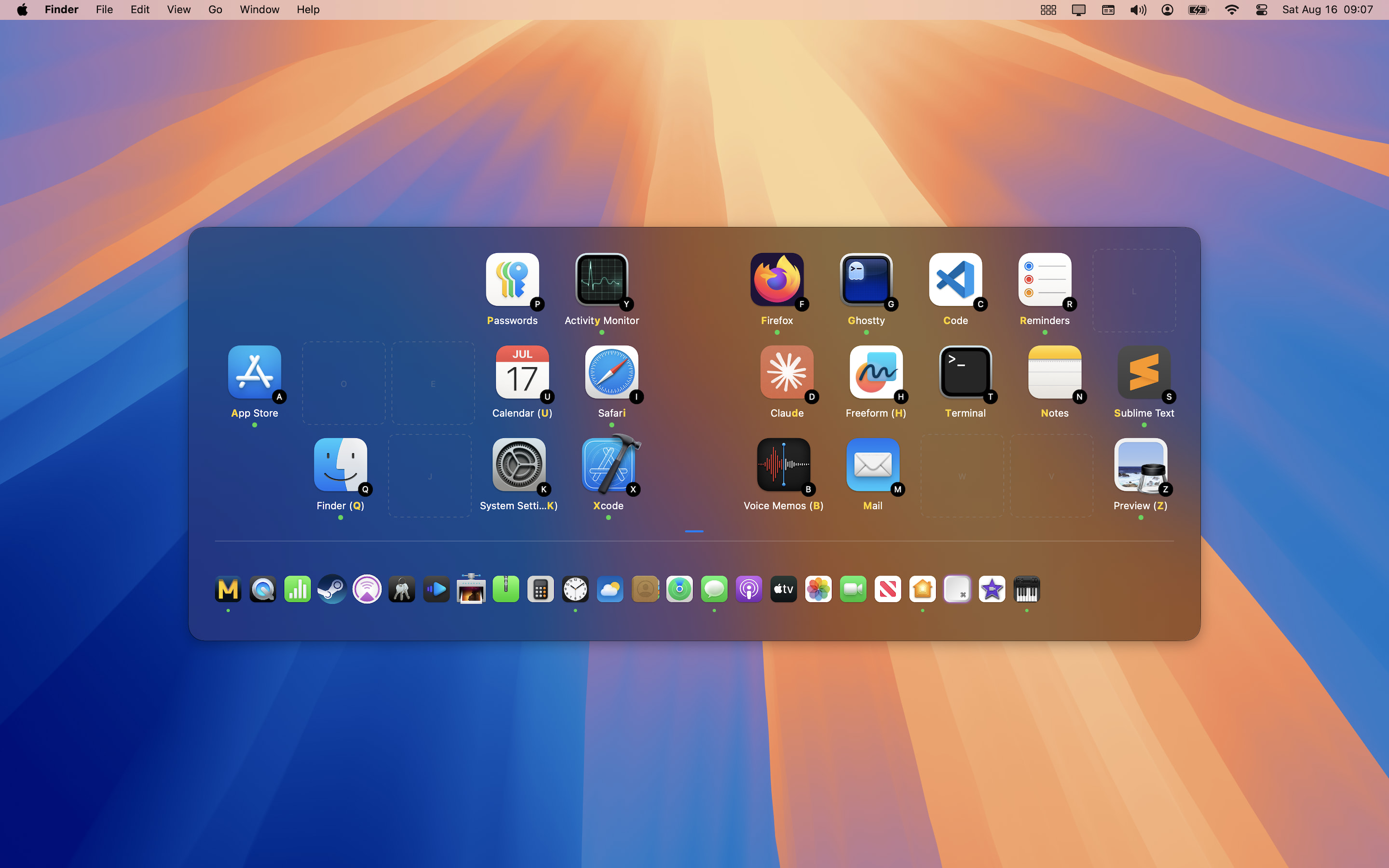
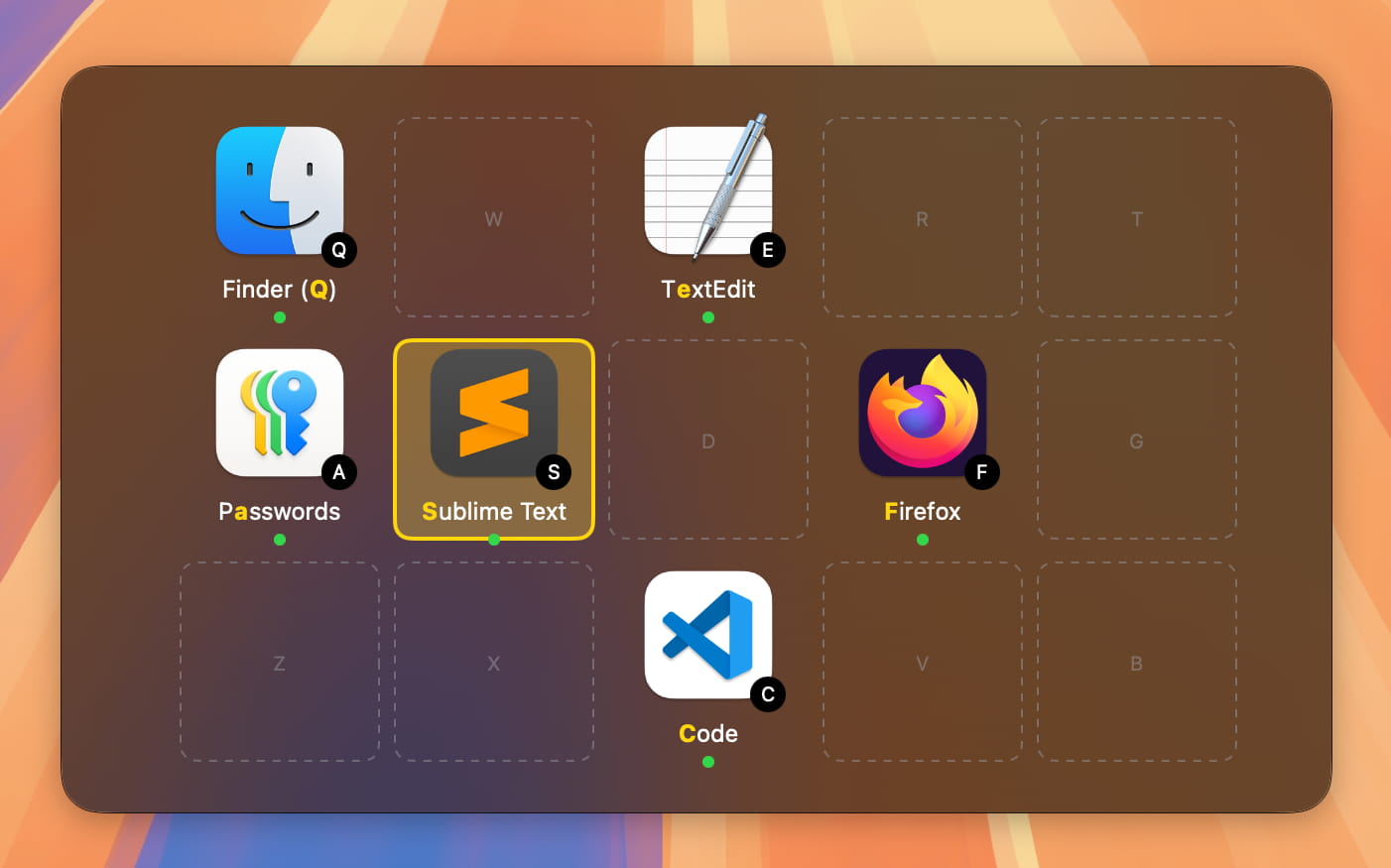
Custom keyboard keys
Customize your keyboard keys, to fit your language.
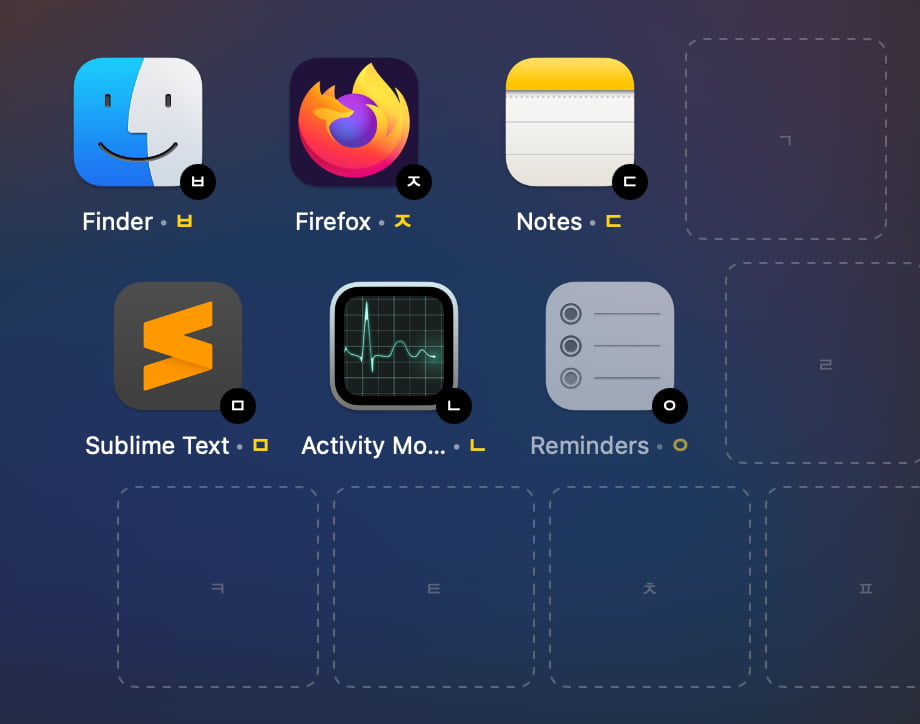
Window positioning and size
Configure where the SpatialDock window appears and its size to avoid interfering with your workspace.
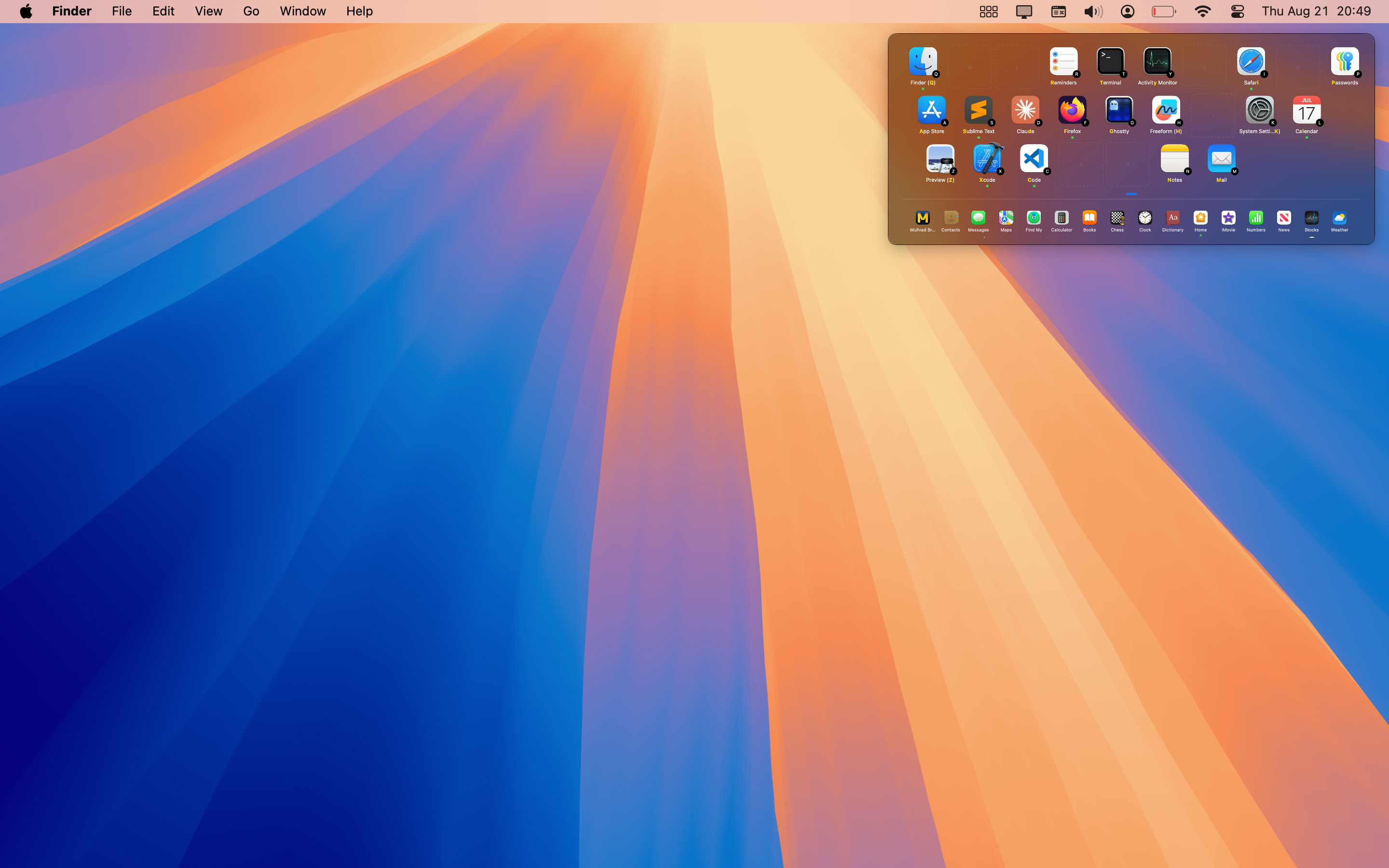
Multi-screen support
Choose where SpatialDock appears when using multiple displays:
• Screen with active window
• Screen where mouse cursor is located
• Main screen
Coming soon: Different dock configurations for each screen
Visual customizations
SpatialDock UI can be customized to fit your preferences
• Light/Dark/System color schemes
• Show or hide app labels
• Custom app selection highlight color
• Custom app icons
• Multiline secondary dock display
• ...
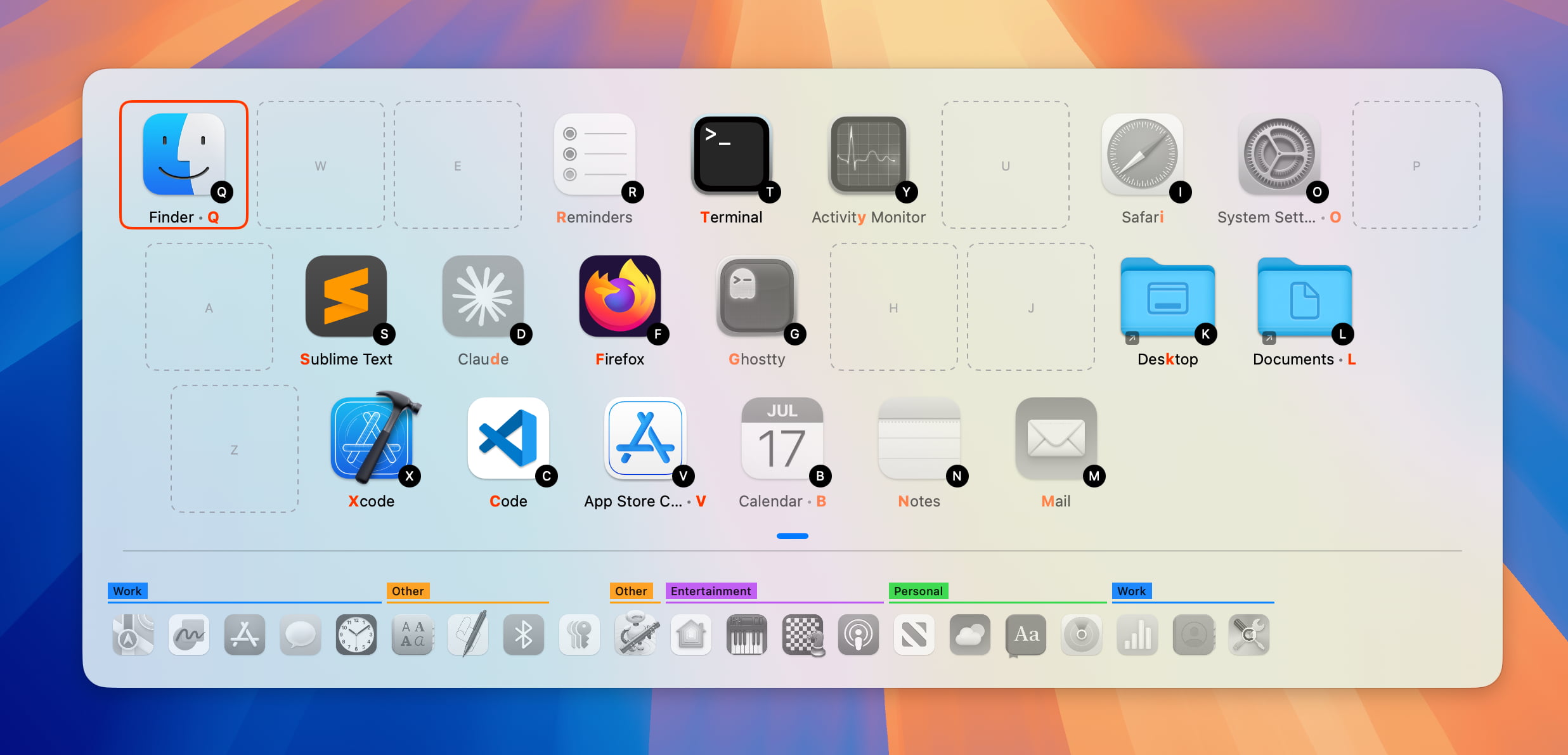
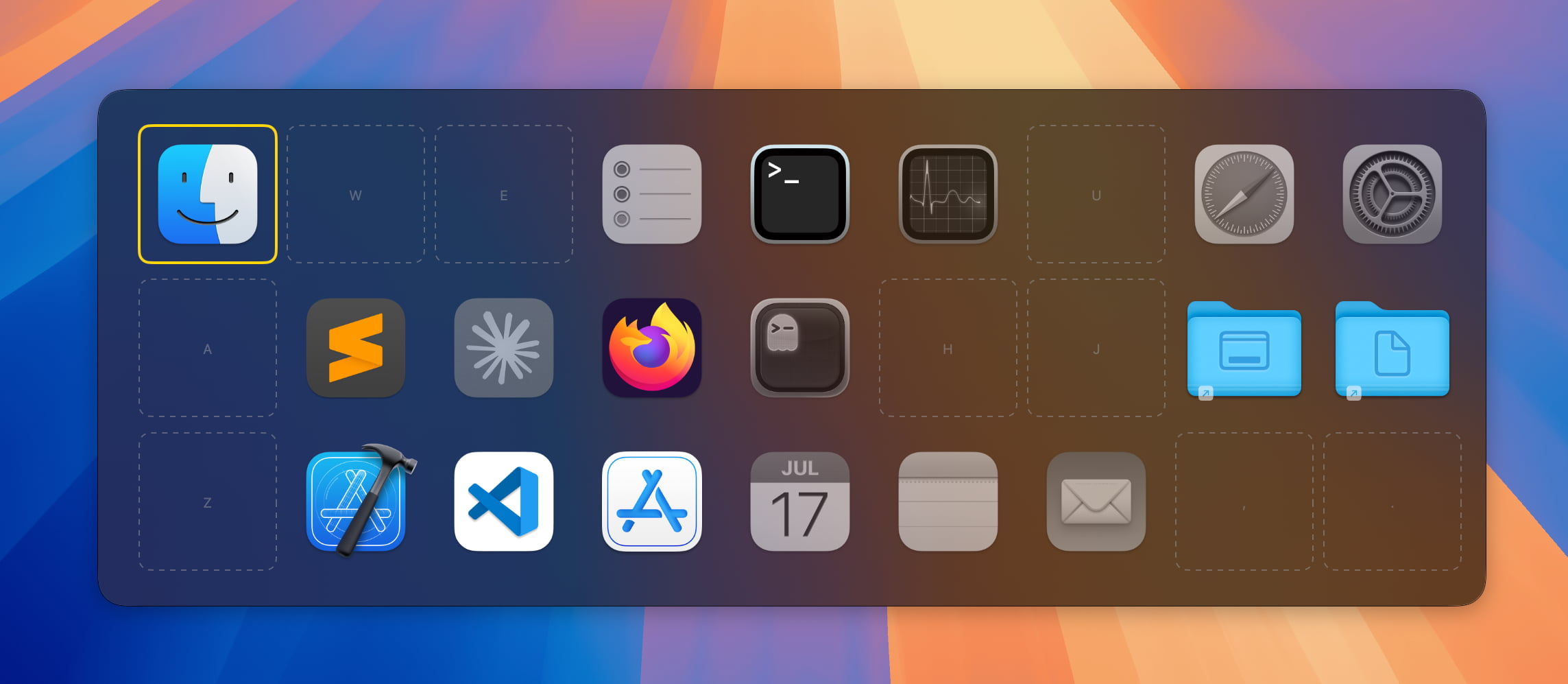
Fast and efficient
An app switcher should not be on your way, SpatialDock is optimized to react quickly and to consume low computing resources.
• Fast activation
• Low resource usage
• macOS Native App
Private
• No data collection
• No network traffic
• No special permissions required
• macOS Sandbox
How to use browser tabs as apps
You can convert web applications into standalone apps that appear in SpatialDock.
Methods:
• Safari: Use the built-in "Add to Dock" feature (File > Add to Dock)
Once created, these web apps will appear in SpatialDock like regular applications.
How to use Caps Lock as activation key
macOS requires a third-party tool to remap Caps Lock to a modifier key that SpatialDock can use.
Tools you can use:
• Hyperkey - Simple app for converting Caps Lock to a hyper key
• Karabiner-Elements - Advanced keyboard customization tool
After setting up one of these tools, configure the remapped key as your activation key in SpatialDock settings.
I don't see an app in SpatialDock
SpatialDock only shows apps that have been launched at least once while SpatialDock is running. This prevents cluttering your interface with apps you never use.
Solutions:
• Launch (or relaunch) the app to make SpatialDock detect it
• Check the ignored apps list in settings - the app might be hidden
• If you previously removed the app from the dock, launch it again
I uninstalled an app but it still appears in SpatialDock
When you uninstall an app from macOS, SpatialDock retains its position in your dock configuration.
Solution:
Drag the app icon to the remove box in SpatialDock settings to permanently remove it from your dock.
I have too many apps in the secondary dock
Options:
• Move frequently used apps to the primary dock for direct keyboard access
• Scroll through the secondary dock to view additional apps
• Increase the number of rows shown in the secondary dock (Settings > Display)
Activation key conflicts with a macOS shortcut
If your chosen activation key combination is already used by macOS or another app, it may not work correctly.
Solutions:
• Change the activation key in SpatialDock settings to a different modifier
• Avoid assigning apps to letter keys that conflict with system shortcuts
• Check System Settings > Keyboard > Keyboard Shortcuts to identify conflicts
My app starts in recovery mode
This can occur if you've chosen Option as your activation modifier key, since Option is used to boot into recovery mode when held during startup.
Solution:
Consider using a different modifier key (like Right Command) to avoid this conflict.
My app icon changed but SpatialDock doesn't refresh it
To optimize performance, SpatialDock caches app icons and doesn't refresh them automatically.
Solution:
• Go to Advanced Settings
• Press the "Refresh Icons" button
• Relaunch the app to let SpatialDock reload its icon
